In the realm of wearable technology, smartwatches have emerged as a cornerstone, offering an array of functionalities that extend far beyond mere timekeeping. As these devices continue to intertwine with daily life, they serve not just as a symbol of technological advancement but as a tool enhancing productivity, health, and connectivity. The global market trajectory for smartwatches is not just a curve; it’s a steep climb, reflecting their growing role in both personal and professional spheres. For those positioned at the forefront of commerce and innovation, understanding the nuances of this market is not just beneficial; it’s imperative for maintaining a competitive edge and meeting the sophisticated needs of a diverse clientele.
Table of Contents
1. The surge of wearable innovations
2. Breakthroughs propelling market evolution
3. Market dynamics and consumer insights
4. Conclusion
The surge of wearable innovations
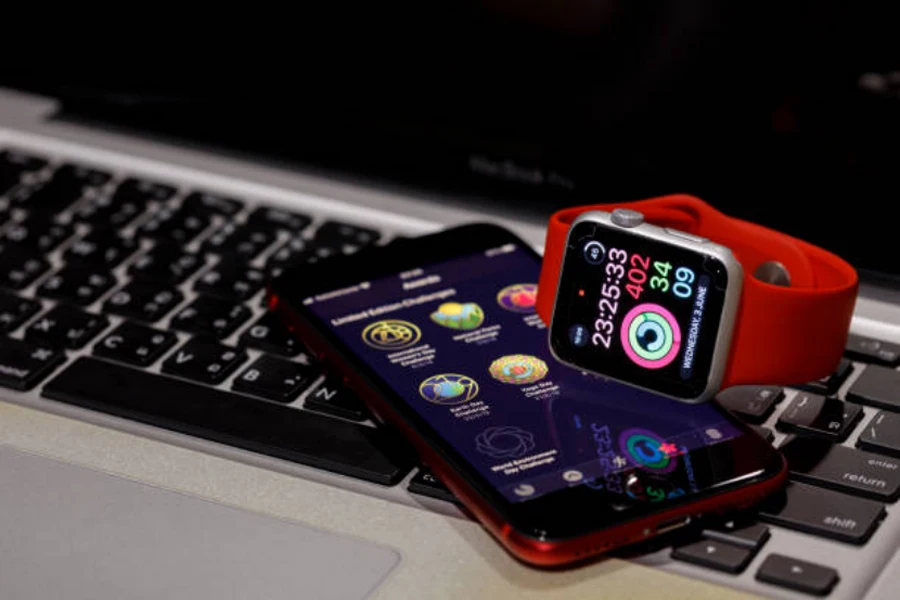
In an era where digital interconnectivity reigns supreme, the wearable technology market, especially smartwatches, has witnessed a transformative evolution. Valued at USD 61.30 billion in 2022, the global wearable technology market is expected to expand at a compound annual growth rate (CAGR) of 14.6% from 2023 to 2030. These devices have transcended their initial role as time-telling gadgets to become multifaceted tools, offering a wide range of functionalities for both professional and personal applications.
Embracing wearable tech
The consumer embrace of wearable technology signifies a major shift in lifestyle and behavior. Smartwatches, leading this revolution, have become vital in providing real-time access to health metrics, communication, and productivity tools. With advanced sensors and algorithms, they now meticulously track health metrics like heart rate variability, oxygen saturation, and stress levels. Their ability to sync seamlessly with other smart devices creates an interconnected ecosystem that bolsters user experience and efficiency. For instance, Xiaomi’s Watch S1 Series launched in March 2022, features 117 fitness modes along with blood oxygen saturation and sleep monitoring, illustrating the depth of health tracking available today.
Professionals across various sectors are leveraging these wearables to enhance operations. In healthcare, they enable remote patient monitoring, while in logistics and supply chain management, they facilitate real-time data access. The demand for smartwatches with NFC payments, voice-activated commands, and enterprise-level security protocols is rising, indicating a broader application in the professional sphere.
The evolution of smart timepieces
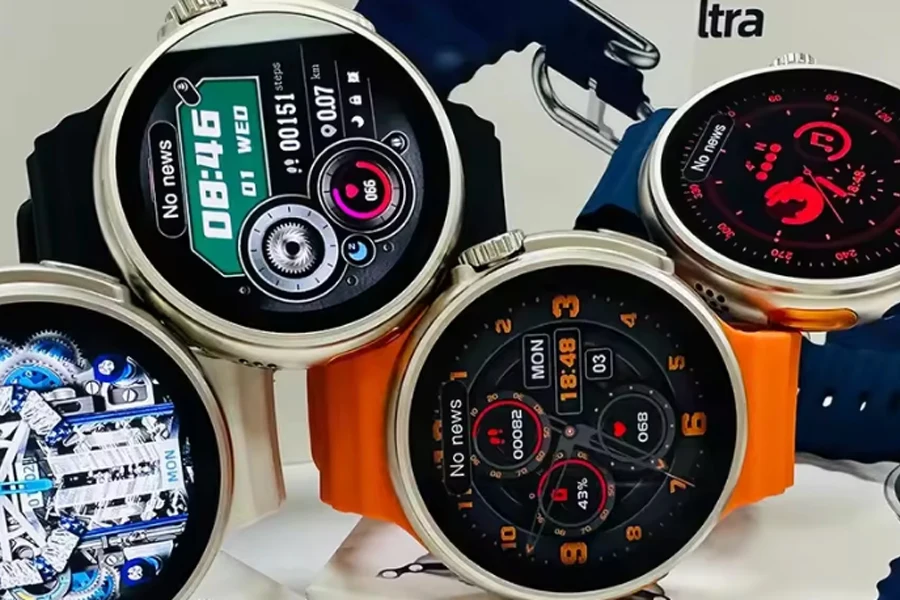
The journey of smartwatches from rudimentary digital watches to sophisticated wearable computers encapsulates a remarkable technological evolution. Beginning with the Pulsar P1 in 1972, the first digital watch, to contemporary models like the Apple Watch 6 and Samsung Galaxy Smartwatch, the transformation has been profound.
Historical milestones
Early Beginnings: The 1980s saw innovations like the Casio C-80 Calculator Watch, while the 1990s brought the Timex Datalink, a pioneer in wireless data transfer to a wristwatch.
Linux and Bluetooth Innovations: In 1998, Steve Mann introduced the world’s first Linux wristwatch. This was followed by the Samsung SPH-WP10 in 1999, the first watch phone, and the Sony Ericsson MBW-100 in 2006, which was among the first to feature Bluetooth connectivity.
Breakthroughs in the 2010s
Rise of the Modern Smartwatch: The real surge in smartwatch popularity began in the 2010s. Key models include:
Motorola MOTOACTV (2011): Offered fitness training features and Bluetooth connectivity.
Sony Smartwatch 1 (2012) & 2 (2013): Brought Android WEAR API and OLED displays.
Pebble Smartwatch (2013): Known for its affordability and compatibility with Android and iOS.
Samsung Galaxy Gear (2013): Featured a Super AMOLED screen and camera capabilities.
Health and Fitness Focus: Samsung Gear Fit (2014) and LG’s “G” and “R” Smartwatches (2014) emphasized fitness tracking and ergonomic designs.
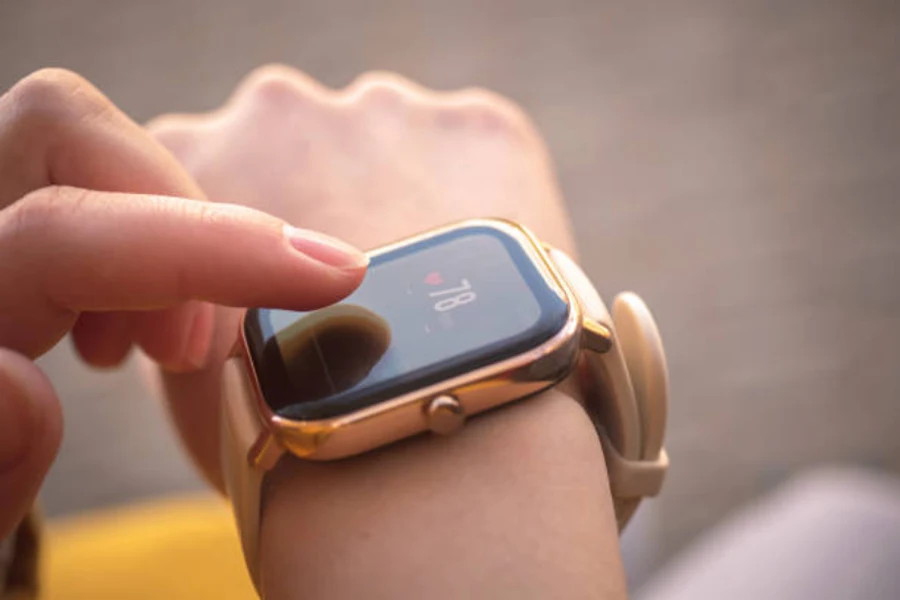
Advanced features and improvements
Enhanced Connectivity: Samsung Gear S (2014) introduced 3G connectivity, marking a shift towards smartwatches functioning independently from smartphones.
Design and Functionality: The Huawei Watch (2015) and Apple Watch (2015) set new standards in design and functionality, integrating features like heart rate sensors and advanced display resolutions.
The latest innovations
Fitbit Versa 3 (2020): Highlighted advancements in health monitoring and battery efficiency.
Apple Watch 6 (2020): Offered features like blood oxygen measurement, ECG, and an always-on Retina display.
Samsung Galaxy S3 (2020): Emphasized enhanced display, extended battery life, and a range of health monitoring sensors.
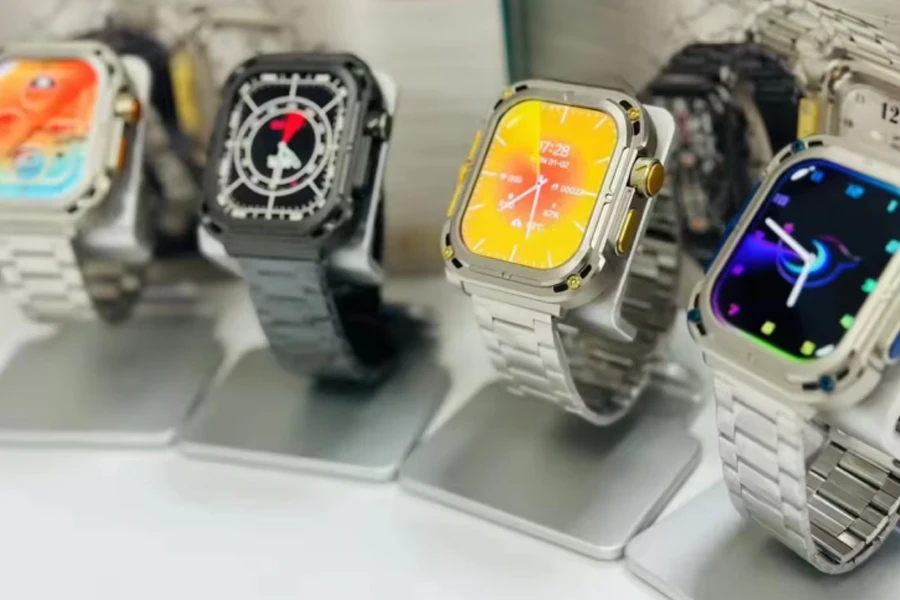
Smartwatch concepts and terms
Technological Integration: Modern smartwatches now feature advanced sensors for gyroscope, notifications, widgets, apps, and more. They are also focusing on power consumption efficiency, tag expressions, and layers for a more intuitive user experience.
The evolution of smart timepieces is a testament to the rapid advancements in wearable technology. From basic digital displays to complex sensors and health monitoring capabilities, smartwatches have become integral to modern lifestyle and health management. As technology continues to advance, we can expect even more sophisticated and personalized wearable experiences.
Breakthroughs propelling market evolution
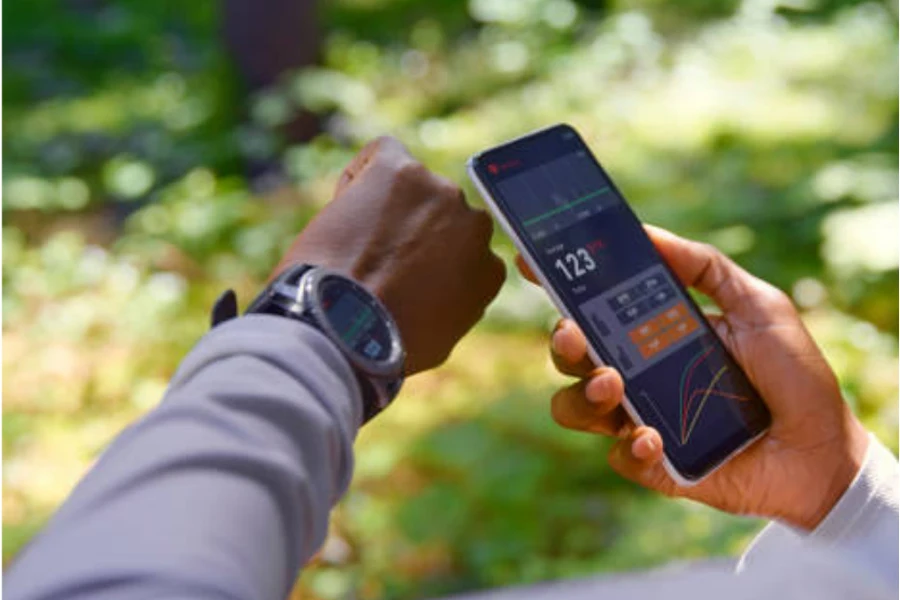
The smartwatch industry is witnessing an unprecedented era of innovation, with breakthroughs in technology and design reshaping the market landscape. These advancements are not just enhancing the functionality of these devices but are also setting new standards for what users expect from their wearable tech.
The advent of next-gen features
The latest generation of smartwatches is marked by the introduction of cutting-edge features that are pushing the boundaries of traditional wearable technology. Advanced chipsets are enabling faster, more efficient performance, while high-resolution, energy-efficient displays offer richer, more engaging user experiences. Connectivity options have expanded beyond Bluetooth and Wi-Fi, with LTE and NFC capabilities allowing for greater independence from smartphones.
Developers are also integrating more sophisticated health and fitness tracking features, from electrocardiogram (ECG) sensors to advanced sleep tracking algorithms. These features are supported by vast improvements in battery technology, ensuring that even with increased functionality, device longevity is not compromised. Additionally, the incorporation of artificial intelligence and machine learning is making smartwatches smarter, with personalized alerts and recommendations based on user behavior and preferences.

For instance, the Apple Watch Series 9, lauded as the best overall smartwatch by Forbes, is equipped with built-in fall and crash detection, heart rate notifications, and blood oxygen level measurements. It also boasts temperature sensing and cycle tracking, offering a comprehensive health overview. The watch’s S9 chip powers an ultra-bright, always-on Retina display, enhancing user interaction and readability.
On the Android front, the Samsung Galaxy Watch 6 emerges as a top contender, offering detailed sleep tracking and a range of health tools with phenomenal accuracy. Its advanced BIA sensor and personalized heart zones provide users with in-depth fitness tracking, while its design aesthetics ensure it’s not just a gadget but a fashion statement.
In the realm of budget-friendly options, the Amazfit GTR 4 offers basic features without compromising on quality. Its BioTracker 4.0 PPG biometric sensor provides 24-hour health monitoring, including heart rate and blood oxygen monitor plus sleep tracking. For those seeking a premium experience, the Apple Watch Ultra 2 boasts an aerospace-grade titanium case and an Always-on Retina display, making it ideal for rugged adventuring with premium features.
Health monitoring and personalization
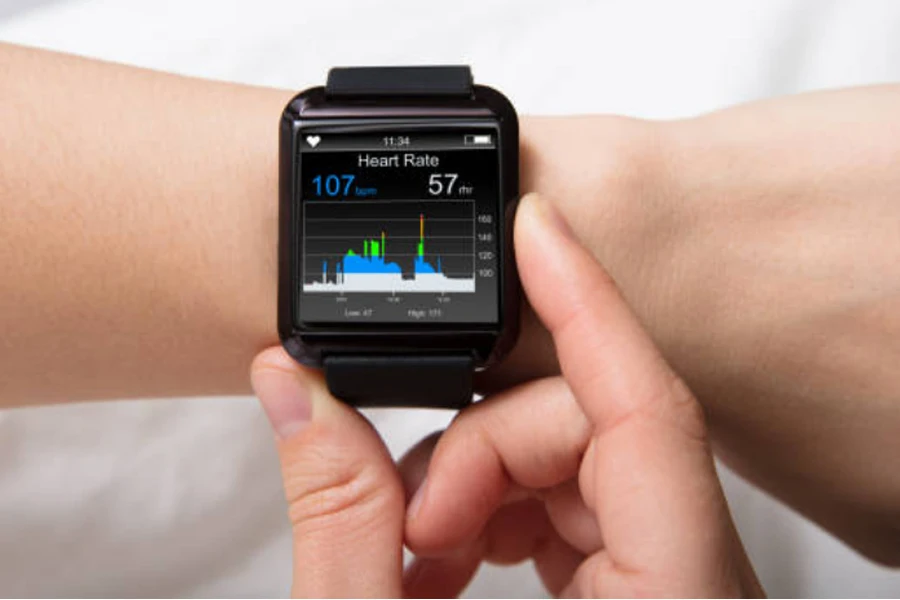
Health monitoring capabilities have become a cornerstone of smartwatch functionality. Modern devices offer a comprehensive suite of health tracking features, including heart rate monitoring, blood oxygen level detection, and stress analysis. These features provide users with valuable insights into their health and well-being, empowering them to make informed decisions about their lifestyle and activities. The Garmin Venu 2 Plus, for example, offers a Health Snapshot feature and Body Battery energy levels, along with a custom sleep score and fitness age. Its in-depth fitness tracking and AMOLED display make it a favorite for outdoor adventurers who demand premium health and fitness features.
Personalization is another area where smartwatches are seeing significant advancements. Users can now customize not just the look of their device with interchangeable straps and watch faces, but also the functionality, with downloadable apps and widgets tailored to their specific needs and interests. This level of personalization is transforming the smartwatch from a generic gadget into a highly personalized tool that is integral to the user’s daily life.

Personalization is reaching new heights with devices like the Google Pixel Watch 2, which features cutting-edge sensors for precise health reporting. It can monitor skin temperature, blood oxygen levels, and even identify signs of stress, offering a more personalized health management approach. With up to 40% more accurate heart rate tracking, it represents the future of personalized health monitoring. The Fitbit Sense 2 provides detailed stress tracking and a lightweight build, including a 6-month Premium membership for an enhanced experience. It’s designed for those who prioritize tracking their physical fitness with extensive features.
In the professional realm, these advancements are particularly impactful. For individuals in healthcare, fitness, or any field where monitoring and data are crucial, the latest smartwatches offer a level of convenience and capability that was previously unimaginable. For online retailers, understanding these advancements and how they resonate with different market segments is crucial. It’s about more than just selling a product; it’s about providing a solution that meets the evolving needs and expectations of a diverse and demanding clientele.
As the smartwatch market continues to evolve, staying informed about the latest technological advancements and market trends is essential. The devices of tomorrow will likely bear little resemblance to those of today, with even more advanced features and capabilities that will continue to redefine what’s possible in the realm of wearable technology.
Market dynamics and consumer insights

The smartwatch market is undergoing a significant transformation, marked by rapid growth and evolving consumer expectations. This section explores the intricate dynamics driving market expansion and delves into the nuanced purchasing patterns shaping the industry’s future.
Analyzing market expansion and influencers
The global smartwatch market, valued at USD 11961.51 million in 2022, is anticipated to skyrocket to USD 49436.29 million by 2028, boasting an impressive compound annual growth rate (CAGR) of 26.68%. This remarkable growth trajectory is underpinned by several pivotal factors. Technological advancements are at the forefront, with next-generation chipsets, enhanced connectivity options, and innovative health monitoring features driving consumer interest and market penetration.
Regional market expansion is particularly pronounced in technologically advanced areas. North America, with its robust tech infrastructure and high consumer purchasing power, is witnessing substantial growth. Similarly, the Asia-Pacific region, fueled by a burgeoning middle class and increasing tech adoption rates, is emerging as a significant market. Europe continues to show strong growth, driven by a preference for high-end, feature-rich devices.
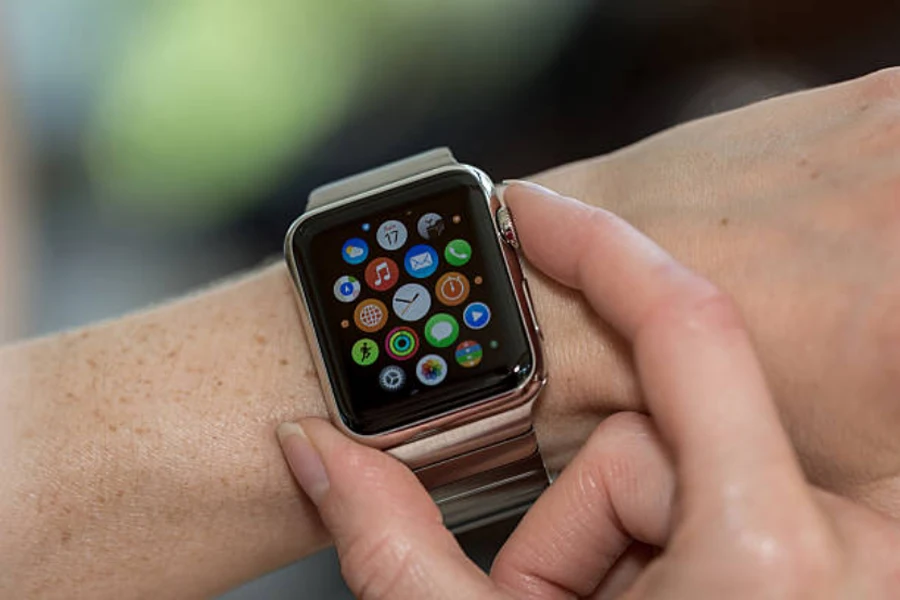
Influential industry players, including Fitbit Inc., Samsung Electronics Co. Ltd., Garmin, and Apple Inc., are continually redefining the market landscape. These companies are not merely reacting to trends but are actively shaping the industry’s future through innovation, strategic alliances, and a deep understanding of consumer behavior. Their efforts are complemented by a myriad of emerging players who are introducing competitive products, further intensifying the market dynamics.
Preferences and purchasing patterns
Consumer preferences in the smartwatch domain are increasingly sophisticated, with a clear inclination towards devices that offer a harmonious blend of aesthetics, functionality, and personalized user experiences. There’s a notable demand for smartwatches that serve as extensions of the smartphone, offering seamless connectivity, app integration, and communication capabilities. Health and fitness features continue to be a significant draw, with consumers seeking comprehensive wellness tracking, from heart rate monitoring to sleep analysis and stress management.
Purchasing patterns reveal a market that’s segmented across various price points and functionalities. While there’s a substantial market for premium models offering exclusive features and superior build quality, there’s also a growing demand for budget-friendly devices that provide essential smartwatch functionalities. This indicates a diverse consumer base with varied needs, preferences, and financial capabilities.
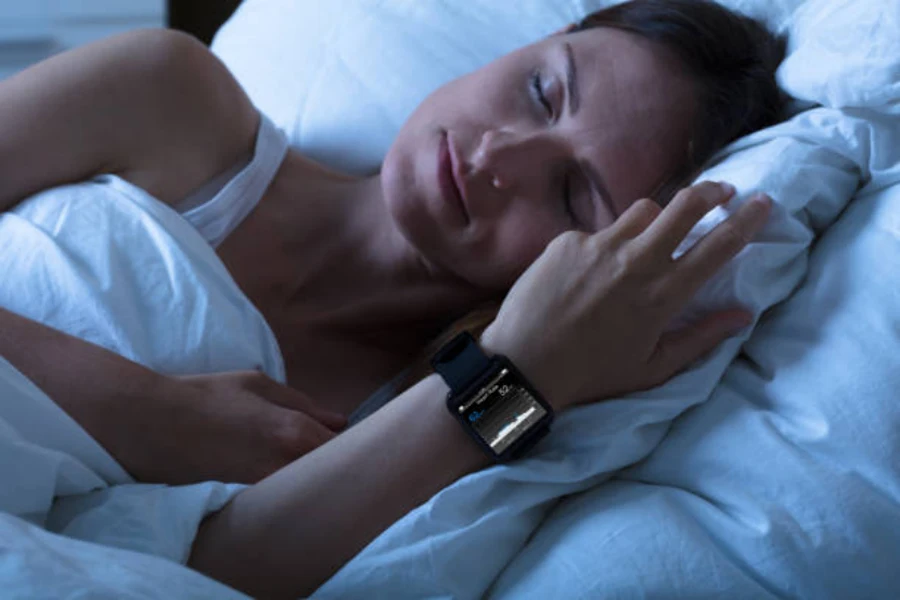
The market’s evolution is further influenced by factors such as brand loyalty, product ecosystem integration, and the availability of personalized options. Consumers are increasingly looking for devices that fit seamlessly into their lifestyle, offering customization in everything from watch faces to straps and notifications.
In navigating this complex and rapidly evolving market, industry professionals must adopt a multifaceted approach. This involves staying abreast of technological advancements, understanding regional market nuances, and aligning product offerings with consumer expectations. As the smartwatch market continues to expand and diversify, those who can effectively tap into these dynamics will be well-positioned to capitalize on the myriad opportunities this growth presents.
Conclusion
As the 2024 horizon approaches, the smartwatch market’s trajectory is clear: a blend of innovative technology, consumer-centric design, and health-focused features will define success. For those navigating this space, understanding these trends is not just beneficial; it’s crucial. Aligning product offerings with consumer expectations, leveraging technological advancements, and staying attuned to market shifts will be key strategies. As the industry continues to evolve, those who adapt, innovate, and anticipate will not only survive but thrive in the dynamic world of smartwatches.




